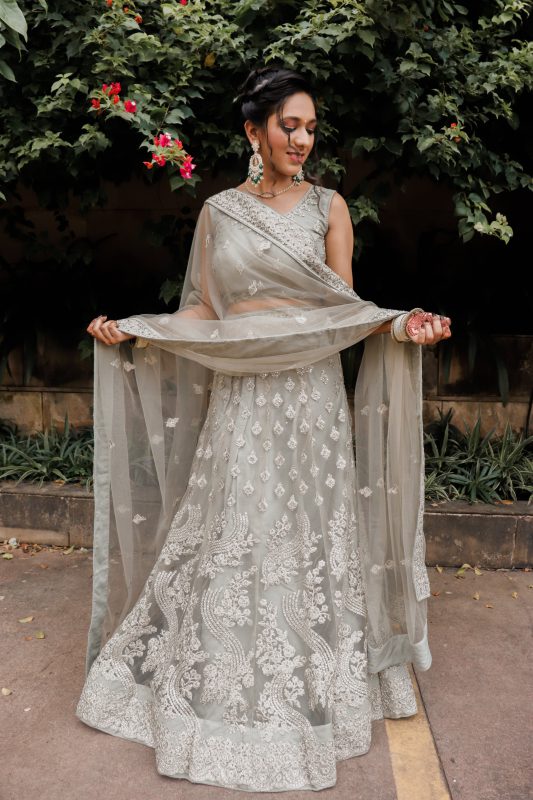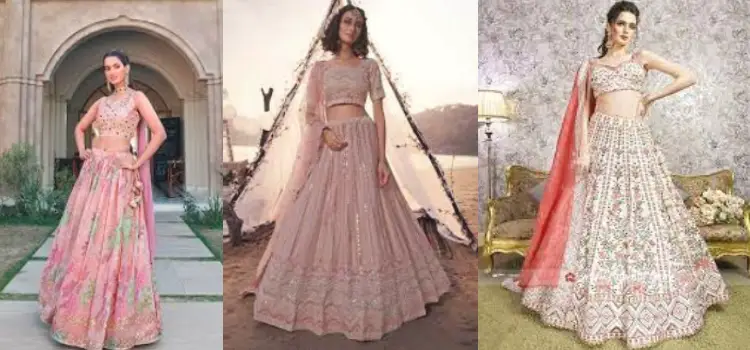women lehenga
The Elegant World of Dresses For Women Lehenga
Introduction
The dresses for women lehenga, a traditional Indian garment, has become an epitome of elegance and style in women’s fashion. Originating from the Indian subcontinent, the lehenga is more than just a piece of clothing; it’s a cultural symbol, a fusion of art, and a fashion statement. This article delves into the world of lehengas, exploring their history, types, fabrics, and occasions for wearing, providing a comprehensive guide for anyone interested in this magnificent attire.

History and Evolution
The dresses for women lehenga, also known as lehenga or ghagra, has its roots deep in the history of the Indian subcontinent. Historically, it was worn by women in the Mughal era, evolving over centuries from the royal courts of ancient India to the fashionable wardrobes of modern women. Initially, it was a garment for the elite, but over time, it became popular among women of all strata. The evolution of the lehenga is a testament to its versatility and timelessness, adapting to changing fashion trends while maintaining its cultural essence.
Types of dresses for women lehenga
- A-Line Lehenga: Resembling the letter ‘A’, this style is tighter on the waist and flares out at the bottom. It suits most body types and is a popular choice for weddings and formal events.
- Circular/Flared Lehenga: Known for its voluminous and dramatic flare, the circular dresses for women lehenga is traditional and offers a regal look. It’s ideal for grand occasions like weddings.
- Mermaid/Fishtail Lehenga: This style hugs the body till the knees and flares out from the calves, resembling a mermaid’s tail. It’s perfect for those looking to accentuate their curves.
- Panelled Lehenga: Made with horizontal panels of fabrics, this lehenga has more flare and volume, adding a playful and vibrant look to the outfit.
- Straight Cut Lehenga: As the name suggests, this lehenga falls parallel to the legs. It is a versatile style that suits all body types and is preferred for its elegant and understated look.
The fabric of a dresses for women lehenga plays a crucial role in defining its look and feel. Common fabrics include:
- Silk: Known for its luxurious texture and sheen, silk lehengas are often chosen for weddings and formal events.
- Georgette and Chiffon: These lightweight fabrics are great for a flowy, graceful look.
- Velvet: Velvet lehengas offer a royal and opulent feel, perfect for winter weddings.
- Cotton: For those preferring comfort and a more casual look, cotton dresses for women lehengas are ideal.
Embroidery and Embellishments
The beauty of a dresses for women lehenga is often accentuated by its embroidery and embellishments. Techniques like Zari, Zardozi, Sequins, Mirror work, and Thread work add to the charm and elegance of the lehenga. These embellishments can range from subtle and understated to bold and opulent, depending on the occasion.
Color Palette
dresses for women lehengas come in a myriad of colors. Traditional colors like red, maroon, and green are popular for weddings, symbolizing prosperity and fertility. Modern trends see a shift towards pastel shades, off-whites, and even bold, unconventional colors, allowing for personal expression and style.
Choosing the Right Lehenga for Different Occasions
- Weddings: Bridal dresses for women lehengas are usually rich in color and embroidery. Brides often choose vibrant colors and heavy embellishments for a grand and festive look.
- Festivals and Religious Ceremonies: dresses for women lehenga these occasions are usually bright and colorful with moderate embellishments.
- Parties and Formal Events: For these settings, women might opt for lehengas with contemporary designs, lighter fabrics, and minimalistic embroidery.
Accessorizing the Lehenga
The right accessories can enhance the look of a lehenga. Traditional jewelry like Kundan, Palki, and Minakari add to the ethnic charm. For a modern twist, fusion jewelry or minimalist pieces can be chosen. The choice of footwear, usually ethnic sandals or heels, and a complementing clutch or handbag completes the ensemble.
Maintaining a Lehenga
Proper care and maintenance are essential for preserving a lehenga. It’s recommended to dry clean dresses for women lehengas, especially those with heavy embroidery and embellishments. Storing them in a dry place, preferably wrapped in muslin cloth, helps in retaining their beauty and longevity.
To further enhance the appeal of a lehenga, styling plays a crucial role. Here are some tips to elevate your lehenga look:
- Dupatta Draping: The dupatta can be draped in various ways to change the look of the dresses for women lehenga. Common styles include the classic over-the-shoulder drape, the front-flow drape, and the Saree-style drape. Each style offers a unique look and can be chosen based on the occasion and personal preference.
- Blouse Designs: The blouse or choli is an integral part of the lehenga ensemble. Experimenting with different necklines, sleeve lengths, and back designs can add a modern twist to traditional lehengas. Crop top styles, off-shoulder designs, and deep-backs are popular contemporary choices.
- Mix and Match: Don’t hesitate to mix and match different components of the lehenga. Pairing a traditional skirt with a modern blouse or wearing a vintage dupatta with a simple lehenga can create a unique and personalized look.
- Hairstyles and Makeup: Complement your lehenga with the right hairstyle and makeup. For a traditional look, opt for hairstyles like buns adorned with flowers or braids. Contemporary looks can be complemented with loose curls or a sleek ponytail. Makeup should match the occasion – bold and dramatic for weddings and subtle and natural for casual events.
Lehengas can be chosen to flatter different body types. Here’s a quick guide:
- Pear-Shaped Body: A-line lehengas that flare from the waist help balance the lower body.
- Apple-Shaped Body: High-waisted, flared dresses for women lehengas can create a more balanced silhouette.
- Hourglass-Shaped Body: Mermaid-style lehengas are ideal for highlighting the curves.
- Rectangle-Shaped Body: Panelled lehengas add volume and give a curvier appearance.
Sustainability and Eco-friendly Choices
In the age of sustainability, many designers are now offering eco-friendly lehenga options. These include lehengas made from organic fabrics, employing natural dyes, and embracing handloom techniques. Opting for sustainable fashion not only helps the environment but also supports traditional artisan communities.
Customization and Tailoring
For those looking for something unique, custom-tailored lehengas are a great option. Many designers offer bespoke services where you can choose your fabrics, designs, and cuts to suit your style and body type. A well-tailored lehenga can make a significant difference in appearance and comfort.
Global Influence and Fusion Styles
The lehenga has crossed borders and fused with global fashion trends. Indo-western lehengas, combining the Indian silhouette with western design elements like peplum tops or full-length gowns, are becoming increasingly popular. These fusion styles cater to the tastes of modern women who appreciate a blend of traditional and contemporary fashion.
Conclusion
The dresses for women lehenga is not just a dress; it’s a celebration of heritage, culture, and modern fashion. Its versatility, variety, and elegance make it a favored choice for women across ages and occasions. As fashion evolves, the lehenga continues to stand out, blending tradition with contemporary trends, making it a timeless piece in the world of women’s attire. Whether you’re attending a wedding, a festival, or any formal event, a well-chosen lehenga can make you feel like royalty, embracing the grandeur and grace that this classic garment embodies.

